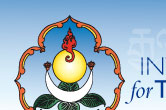Mantra Healing and the rGyud bZhi
The rGyud bZhi – The ‘Four Tantras of Tibetan Medicine’- written by Yuthok Yonten Gonpo, the Father of Tibetan Medicine, in the eighth century – is the text which is the mainstay of Traditional Tibetan Medicine. This text makes numerous references to Mantra Healing, and lists many mantras for specific disorders.
Most of these references to Mantra healing are made in the Third Tantra - Mennag rGyud – The ‘Oral Transmission’, as follows:
Chapter 79 makes mention of the use of Mantra Healing, spiritual healing and spiritual ritual in Tibetan Medicine.
Chapter 80 pertains to the pathologies of epilepsy and brain-stroke, which in Tibetan Medicine are considered to be due to provocations from gZa – planetary influences. Mantra Healing is used to heal these diseases. Many mantras are given, which can be recited, or memorised, or placed on the body, or even written on the surrounding walls. Alternatively, these mantras can be recited and blown onto frankincense, which is then burned, or placed in water to be drunk for healing effect.
The healing effect of mantras used in combination with mudras is also discussed in this chapter.
Ninety percent of the treatments outlined in this chapter are through the use of mantras.
Chapter 81 mentions Mantra Healing for disorders of Chu Ser (‘Yellow Liquid’ – serum / lymphatic fluid).
Chapter 33 – Cure of the Thyroid Gland. This chapter gives special mantras for thyroid problems. For cure of the thyroid, medicines, external therapies – such as moxibustion and blood-letting, and Mantra Healing are specified. In this chapter, it is explicitly stated that Mantra Healing is extremely effective for curing thyroid problems.
Chapter 54 deals with the problem of urinary retention. A specific mantra is given for the dissolving of kidney stones.
Chapter 73 is on Paediatrics. Fifteen different specific types of spirits are deemed to cause provocations in children, thus causing disease. Wrathful mantras for healing, amulets, mantra amulets, mantra recitations and rituals are used to cure these diseases.
Chapter 76 deals with childbirth. It mentions the use of warm compresses and mantras with ghee, in order to facilitate childbirth.
Chapter 77 – ‘The Provocation Chapter’ mentions eighteen different types of provocatory spirits which cause disease. The first – and main - treatment mentioned is Mantra Healing.
In the Final Tantra - Phyis ma rGyud – Chapter 12 – Herbal Formulae, it describes that when herbs are collected and prepared, mantra recitations must be performed in order to empower the medicines.
In general, medicinal formulae are compounded whilst mantras are recited. A good example of this is the medicine known as the ‘Five Garudas Pill’, which is prepared to the recitation of five different types of Garuda mantras.
The Second Tantra - Shad rGyud – ‘Explanatory Tantra’ states that all qualified doctors must have a basic understanding of Dharma studies, must also have the correct dharma point of view and Bodhicitta, must be performing Medicine Buddha practice and reciting the mantras daily.
Thus it can be demonstrated that Mantra Healing is – in fact – an integral part of Tibetan Medicine. All the great physicians of Tibetan history have, therefore, also been important in preserving and propagating the essentials of Mantra Healing.
|


